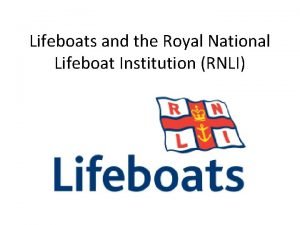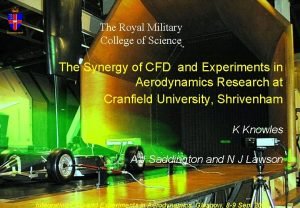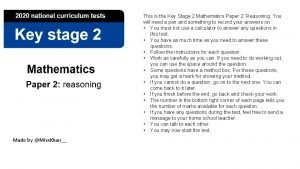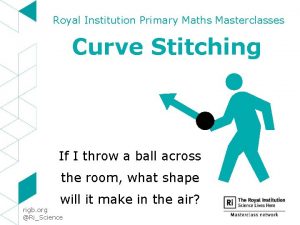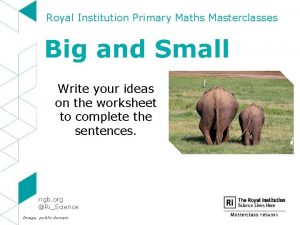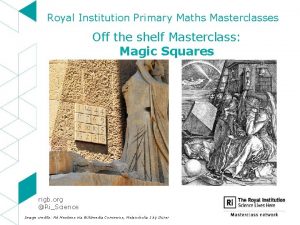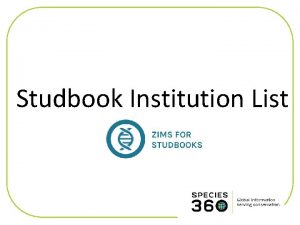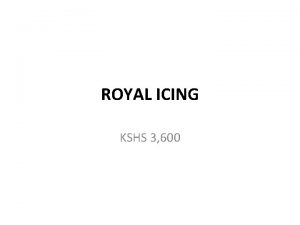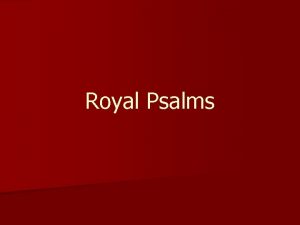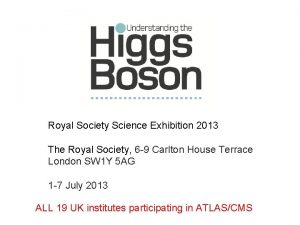Royal Institution Primary Maths Masterclasses Science on Stage


















- Slides: 18

Royal Institution Primary Maths Masterclasses Science on Stage: Benjamin Franklin’s Odometer rigb. org @Ri_Science Image credits: Eric S Hintz

Benjamin Franklin’s Odometer • We are going to travel back in time to when Benjamin Franklin invented the odometer. What year was that? • 1763 • How many years ago is that? • 257 years! • Can you list some of the things which are the same in 2020 as in 1763? And some which are different?

Benjamin Franklin’s Odometer • Where are we? (in our imagination) • America…but not as we know it! • Have you been to America or seen pictures of this country today? • In 1763 America is a colony: it “belongs” to European countries, and some of it (further west: the wild west!) hasn’t even discovered by Europeans yet. • The British Government is trying to rule the American colonies from London. Why might that be difficult?

Benjamin Franklin’s America Not only was communication difficult between America and England, but also within the colony. The pink area belongs to England. How do you think they communicated with each other? Apparently boats were often the best way to send post. Image credits: By New York Public Library, CC 0, https: //commons. wikimedia. org/w/index. php? curid=32049475

Benjamin Franklin’s Problem Postal service in the United States was greatly influenced by Benjamin Franklin who was appointed Postmaster of Philadelphia in 1737, Joint Postmaster General of the colonies for the Crown in 1753, and Postmaster for the United Colonies in 1775. Originally (in 1737) Franklin was in charge of the post in Philadelphia. In 1753 he was put in charge of the whole of the British Colonies (all the pink area) The postal service was: • Unreliable • Slow • Losing money But Franklin was determined to change this! Image credits: By New York Public Library, CC 0, https: //commons. wikimedia. org/w/index. php? curid=32049475

1763 Benjamin Franklin’s tour 1763 - The Boston Post Road While traveling to inspect post offices from New Jersey to New England, Franklin used an odometer to measure the distance between postal stations. The painting shows him on a post office tour in a one-horse chaise, accompanied by his daughter on horseback, while a post rider delivers an urgent message. Image credits: Carl Rakeman via USDo. T

Benjamin Franklin’s Calculation Benjamin Franklin wanted to know how far he had travelled from Boston to Philadelphia Image credits: Robert Feke via Wikimedia Commons Boston

Benjamin Franklin’s Calculation The answer was… 320 miles! On his whole 5 month journey he travelled all over the British colonies, covering thousands of miles! Image credits: Robert Feke via Wikimedia Commons Benjamin Franklin in 1748

Benjamin Franklin’s Calculation When scientists want to solve a big problem they often start by solving a related smaller problem. So instead of measuring the distance from Boston to Philadelphia, I am going to think about measuring the distance around this room. How could I do this? Can you think of any suggestions? How could I measure a distance which is not it a straight line? A trundle wheel! Image credits: EAI Education website

Benjamin Franklin’s Calculation Franklin measured the circumference (perimeter of a circle) of his carriage wheel, and discovered that when his wheel turned a full circle he had gone forward about 4 metres, as it was 402 cm around the wheel. This means each revolution (full turn) is about 1/400 th of a mile. Franklin designed a series of cogs which registered 1 mile travelled after 400 revolutions of the carriage wheel. Image credits: http: //www. robotc. net/wikiarchive/Tutorials/Arduino_Projects/Mobile_Robotics/ Boe. Bot/Using_encoders_to_drive_some_distance

What number do you think these dials are showing? TH: Between 8 and 9 thousand? H: Between 2 and 3 hundred? T: Between 30 and 40? About 38? 8238÷ 400 = 20. 6 miles 8, 238 revolutions

Can you see the geared wheels? How do gears work? Follow the link to find out more: https: //www. youtube. com/watch? v=UOh. Fri 6 FPrs Image credits: Peter Harholdt, 2004

What is this? A modern odometer from a car! Image credits: Skippy 13 via Wikimedia commons

Make your own “odometer” You will need: a small disc of cardboard, a straw, a tape measure and a pencil • Measure (in cm) the circumference of your cardboard disc using the tape measure. (Roll your disc along the tape, marking off the cm as the disc hits the markers. • Put an arrow at “ 0” • Mark off cm around the circumference using your pencil, and number (from 0), clockwise.

Make your own “odometer” Thread the straw through the disc and bend the straw back.

Make your own “odometer” Secure the bent back straw with tape, making a handle (Keep the tape away from the disc). Make sure the wheel can rotate smoothly. You may need to leave a gap between the two bits of the straw when you stick the tape down.

Use your own “odometer” on a map • Make sure your wheel rotates freely • Set your mini odometer with zero at the bottom and place it on the end of a road. Wheel the odometer to the end of the road and measure how far it is in centimetres. • Use the map’s scale to convert this to meters or kilometres

Royal Institution Primary Maths Masterclasses Thank you!
 Royal institution masterclasses
Royal institution masterclasses Formal institution and informal institution
Formal institution and informal institution Royal lifeboat service
Royal lifeboat service Nature masterclasses online
Nature masterclasses online International masterclasses hands on particle physics
International masterclasses hands on particle physics What is your favourite lesson
What is your favourite lesson Royal military college of science
Royal military college of science Key stage 2 maths paper 2 reasoning answers
Key stage 2 maths paper 2 reasoning answers Upper key stage 2 maths
Upper key stage 2 maths Position stage 3 maths
Position stage 3 maths Lowther higher maths ebook download
Lowther higher maths ebook download Stage one denial stage two
Stage one denial stage two The position of the acting area in relation to the audience
The position of the acting area in relation to the audience This is a stage where the audience sits on one side only
This is a stage where the audience sits on one side only Two-stage tendering diagram
Two-stage tendering diagram The word drama comes from
The word drama comes from Stage right and left
Stage right and left Magenta cyan and yellow are the ____ color. *
Magenta cyan and yellow are the ____ color. * A custodial institution for young offenders.
A custodial institution for young offenders.


